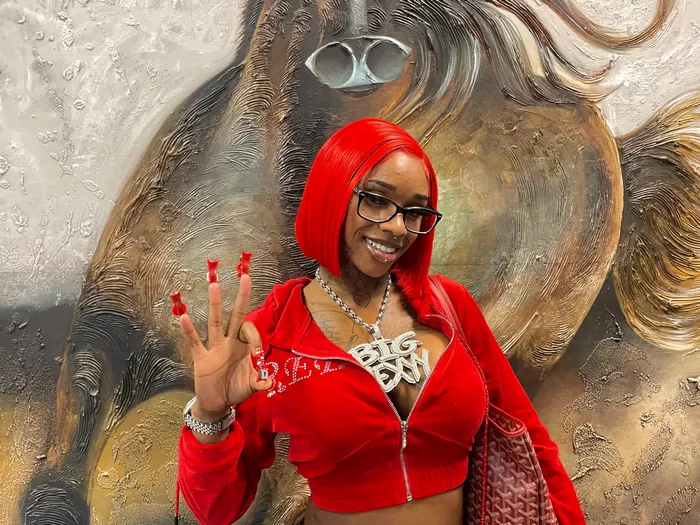Rap music has always been a powerful form of expression. It began as a voice for marginalized communities, providing a platform to speak about their struggles, joys, and everyday lives. However, the portrayal of women in rap has often sparked debate and controversy. This article delves into the complexities of how women are depicted in rap music, exploring both the problematic stereotypes and the empowering narratives.
I. Historical Context
1. Early Days of Rap
Rap music emerged in the 1970s in the Bronx, New York City. It was a male-dominated genre from the start, reflecting the predominantly male environment in which it was created. Early rap lyrics often portrayed women in stereotypical roles. They were sometimes depicted as objects of desire, subordinate to men, or as background characters in the stories being told.
2. The Golden Age of Rap
The late 1980s and early 1990s are often referred to as the Golden Age of rap. This period saw the rise of influential artists like Tupac Shakur, Notorious B.I.G., and N.W.A. While their music brought critical social issues to light, it also included misogynistic themes. Women were frequently depicted in derogatory terms, reinforcing negative stereotypes.
II. Stereotypes and Objectification
1. Misogyny in Lyrics
One of the most criticized aspects of rap music is the misogynistic content in its lyrics. Terms like “bitches” and “hoes” have been commonly used to refer to women. These derogatory terms reduce women to mere objects and perpetuate harmful stereotypes. This kind of language can have a significant impact on how women are perceived both within and outside the genre.
2. Music Videos
Music videos have played a significant role in the portrayal of women in rap. Often, women are depicted as scantily clad and are shown in submissive or hypersexualized roles. These visuals reinforce the idea that women’s value lies in their physical appearance and their ability to please men. Such portrayals contribute to a culture that prioritizes women’s looks over their talents or intelligence.
III. Empowerment and Representation
1. Women Rappers
Despite the negative portrayals, many women have carved out successful careers in rap music. Artists like Queen Latifah, Missy Elliott, and Lauryn Hill have challenged the stereotypes and brought new narratives to the genre. They have used their music to empower women and address issues such as sexism, racism, and female empowerment.
2. Changing Narratives
In recent years, there has been a shift in how women are portrayed in rap. More female rappers are gaining prominence and using their platforms to tell their own stories. Artists like Nicki Minaj, Cardi B, and Megan Thee Stallion are known for their bold and unapologetic lyrics. They challenge traditional gender roles and promote body positivity, sexual autonomy, and financial independence.
IV. The Role of the Audience
1. Consumer Responsibility
The audience plays a crucial role in shaping the content of rap music. Consumer demand influences what kind of music gets produced and promoted. When listeners support songs and artists that portray women positively, it can lead to a broader cultural shift. Fans can also hold artists accountable for their lyrics and challenge them to be more respectful and inclusive in their portrayals of women.
2. Cultural Impact
Rap music has a profound impact on culture, particularly among young people. The way women are portrayed in rap can influence societal attitudes and behaviors. Positive portrayals can empower women and inspire them to pursue their goals. On the other hand, negative portrayals can reinforce harmful stereotypes and contribute to a culture of misogyny.
V. Further Considerations
1. Education and Awareness
Educating young listeners about the history and impact of rap music is essential. Schools and community programs can provide a space for discussions about the portrayal of women in media. By fostering critical thinking, we can help the next generation understand the complexities of these portrayals and make more informed choices as consumers.
2. Supporting Female Artists
Supporting female rappers and other women in the music industry is crucial for promoting diversity and positive representation. By attending their concerts, buying their music, and promoting their work on social media, fans can help elevate these artists and ensure their voices are heard.
3. Industry Responsibility
Record labels, producers, and other industry professionals also have a role to play in shaping the portrayal of women in rap. By prioritizing respectful and inclusive content, they can help set new standards for the genre. This includes providing opportunities for female artists and promoting diverse voices within the industry.
See Also: Unveiling the Sources of Trap Nation’s Music
VI. Conclusion
The portrayal of women in rap music has evolved over time, reflecting broader societal changes. While there is still much work to be done, the increasing prominence of female rappers and the growing awareness among audiences are positive signs. By continuing to challenge stereotypes and promote positive representation, we can help ensure that rap music remains a powerful and inclusive form of expression.
Rap music will continue to evolve, and with it, the portrayal of women will also change. It is up to artists, industry professionals, and audiences to shape this evolution in a positive direction. Through conscious efforts and supportive actions, we can create a future where rap music celebrates and respects women for their talents, intelligence, and individuality.

